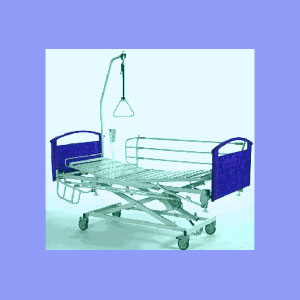
Bed rest for sciatica is an old fashioned conservative treatment option which is sometimes a necessity, rather than a choice, especially during an acute sciatic nerve attack. Although short-term bed rest might be needed for patients in extreme pain, staying inactive and reclined for long periods of time is almost never advised.
This article explains why long periods of bed rest are detrimental to most chronic pain conditions. Furthermore, we will profile the reasons why patients may choose to, or are instructed to, remain in bed.
Emergency Bed Rest for Sciatica
Patients who are suddenly struck with acute pain and muscular spasms are typically advised to rest and relax as much as possible. Stress will make this condition worse, as will pushing themselves to work or do other things which are beyond their current physical abilities. However, patients should not acquiesce to the idea of staying in bed for days, weeks or months, based on a pre-determined formula. Instead, patients should test themselves several times a day to see if they are able to get up and gently move around.
Bed rest retards the healing process, since it slows the circulation and all the crucial life processes. In the case of sciatica which is actually due to ischemia, the reduced cellular oxygenation caused by long periods of rest is actually a primary perpetuator of the pain syndrome.
Long-Term Bed Rest for Chronic Pain
Patients with chronic sciatica should not depend on bed rest as a long-term treatment option. Staying in bed for a protracted time will only weaken the body and extend the life of the agonizing symptoms.
Besides a reduced supply or blood and oxygen reaching the painful location, patients will also suffer a build up of metabolic waste products, such as lactic acid, in their muscles. Patients will also endure the loss of muscle mass and strength, called muscular atrophy. In general, the longer a person stays in bed, the weaker they will become and the more painful their body will feel.
Patients are reminded to challenge themselves to get up and do small tasks, as soon as possible, to avoid bedridden complications.
Bed Rest for Sciatica Warnings
It still surprises me when patients from some parts of the world write to me and tell me that their doctor prescribed 2 or 3 months of bed rest. This is the most unenlightened and antiquated sciatica treatment I can think of and most patients are much worse after going along with this ridiculous notion. Bed rest is even worse when combined with long periods of contraindicated spinal traction fro true torture.
Back pain patients, in general, have to get up and move gently, but steadily, to repair the physical and emotional damage caused by their suffering. Unless there is a serious traumatic injury which requires a static position to heal, such as extreme spinal damage with many broken bones, bed rest is simply poor medicine.
If you have been advised to stay in bed for extended periods of time for your common back and leg pain, consider getting a second opinion. You will be glad you did.





